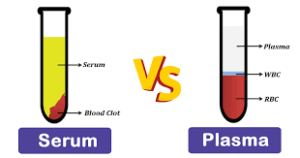 Both plasma and serum are components of blood, but they are different in terms of their composition.
Both plasma and serum are components of blood, but they are different in terms of their composition.
Plasma is the liquid component of blood that contains various proteins, including antibodies, clotting factors, and albumin, electrolytes, nutrients, hormones, and waste products.
Plasma is the fluid that remains after blood cells are removed, and it makes up about 55% of total blood volume.
Serum, on the other hand, is similar to plasma but without the blood clotting factors.
It is the fluid that remains after blood has been allowed to clot and the blood cells and clotting factors have been removed.
Serum contains antibodies, electrolytes, hormones, and nutrients, but it does not contain clotting factors such as fibrinogen.
